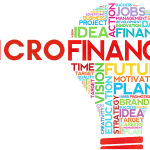n a world marked by disparities in wealth and opportunities, microfinance has emerged as a powerful tool for promoting financial inclusion and fostering economic development. Microfinance institutions provide financial services, such as small loans, savings accounts, and insurance, to individuals and communities traditionally excluded from the formal financial sector. This article delves into the realm of microfinance, its role in advancing financial inclusion, and its potential to empower underserved populations and drive sustainable economic growth.
1. Bridging the Financial Inclusion Gap:
Financial inclusion, the availability and usage of financial services by all segments of society, is crucial for reducing poverty, promoting social equity, and stimulating economic growth. Microfinance targets individuals who lack access to traditional banking services due to factors like low income, lack of collateral, or remote geographic locations.
2. Empowering Micro-Entrepreneurs:
Microfinance plays a pivotal role in supporting micro-entrepreneurs and small businesses. Many individuals in underserved communities possess entrepreneurial skills and aspirations but lack the necessary capital to start or expand their ventures. Microfinance institutions provide them with access to small loans, enabling them to invest in their businesses, purchase equipment, and hire employees.
3. Women’s Empowerment and Gender Equality:
Microfinance has a transformative impact on women’s empowerment and gender equality. Women often face greater barriers to accessing financial services, limiting their economic participation. Microfinance programs specifically target women, giving them the means to start businesses, generate income, and contribute to their families’ well-being.
4. Rural Development and Agricultural Growth:
In agrarian economies, microfinance is instrumental in rural development and agricultural growth. Farmers and rural entrepreneurs can use microloans to purchase seeds, fertilizers, and equipment, leading to increased agricultural productivity and income generation.
5. Microfinance Models:
Microfinance operates through various models, including microcredit, microsavings, microinsurance, and financial literacy programs. These models are tailored to the unique needs of different communities and individuals, ensuring that financial services are accessible, affordable, and relevant.
6. Social Impact and Financial Sustainability:
Microfinance institutions often have a dual focus on social impact and financial sustainability. While their primary mission is to alleviate poverty and promote economic development, they also aim to generate enough revenue to cover operational costs and support future growth.
7. Challenges and Opportunities:
Microfinance faces challenges such as ensuring responsible lending practices, managing risk, and maintaining transparency. Striking a balance between the social mission and financial sustainability can be complex. However, advancements in technology, such as mobile banking and digital payment platforms, are opening new avenues for expanding the reach of microfinance.
8. Future Prospects:
Microfinance has evolved beyond mere financial transactions. It has become a vehicle for social change, enabling individuals and communities to break free from cycles of poverty. As technology continues to reshape the financial landscape, microfinance is poised to play an even more significant role in achieving widespread financial inclusion and fostering sustainable economic development.
Conclusion:
Microfinance is a catalyst for social transformation and economic progress. By providing access to financial services, empowering marginalized communities, and supporting micro-entrepreneurs, microfinance institutions contribute to building resilient and inclusive economies. As the world strives for greater financial inclusion and equitable growth, the impact of microfinance in empowering individuals and communities cannot be overstated.






